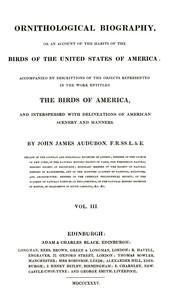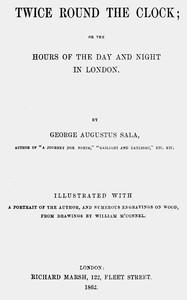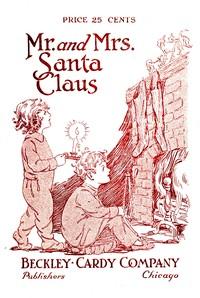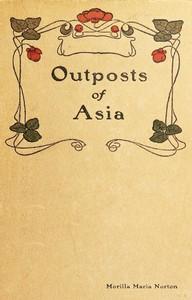|
|
Read this ebook for free! No credit card needed, absolutely nothing to pay.Words: 209224 in 48 pages
This is an ebook sharing website. You can read the uploaded ebooks for free here. No credit cards needed, nothing to pay. If you want to own a digital copy of the ebook, or want to read offline with your favorite ebook-reader, then you can choose to buy and download the ebook.

: Ornithological biography Vol. 3 (of 5) An account of the habits of the birds of the United States of America by Audubon John James - Birds North America@FreeBooksThu 08 Jun, 2023 hus, Reader, I might have been satisfied with the sayings of others, and repeated that the bird in question lays one egg; but instead of taking this easy way of settling the matter, I found it necessary to convince myself of the fact by my own observation. I had therefore to receive many knocks and bruises in scrambling over rugged crags and desolate headlands; whereas, with less incredulity, I might very easily have announced to you from my easy chair in Edinburgh, that the Black Guillemots of America lay only a single egg. No true student of nature ought ever to be satisfied without personal observation when it can be obtained. It is the "American Woodsman" that tells you so, anxious as he is that you should enjoy the pleasure of studying and admiring the beautiful works of Nature. To satisfy yourself as to the correctness of the statements which he here lays before you, go to the desolate shores of Labrador. There, in the vernal month of June, place yourself on some granite rock, against the base of which the waves dash in impotent rage; and ere long you will see the gay Guillemot coming from afar by the side of its mate. They shoot past you on fluttering wings, and suddenly disappear. Go to the place; lay yourself down on the dripping rock, and you will be sure to see the birds preparing their stony nest, for each has brought a smooth pebble in its bill. See how industriously they are engaged in raising this cold fabric into the form of a true nest, before the female lays her eggs, so that no wet may reach them, from the constant trickling of the waters beneath. Up to the height of two or three inches the pebbles are gradually raised, the male stands by his beloved; and some morning when you peep into the crevice, you observe that an egg has been deposited. Two days after you find the number complete. Whilst in Labrador, I was delighted to see with what judgment the Black Guillemot prepares a place for its eggs. Whenever the spot chosen happens to be so situated as to preclude damp, not a pebble does the bird lay there, and its eggs are placed on the bare rock. It is only in what I call cases of urgency that this trouble is taken. About fifty or sixty pebbles or bits of stone are then used, and the number is increased or diminished according to circumstances. The eggs of this species, which appear disproportionately large, measure two inches and three eighths in length, by an inch and five-eighths in breadth. Their form is regular; they are rather rough to the touch, although not granulated; their ground colour an earthy white, thickly blotched with very dark purplish-black, the markings larger and closer towards the great end, which, however, is generally left free of them. The shell is much thinner than that of the egg of the Foolish Guillemot or Razor-billed Auk. As an article of food they are excellent, being delicate and nutritious. The parents pluck the feathers from a space across the lower part of their belly, as soon as incubation commences; and this bare place, when the bird is taken alive, it immediately conceals by drawing the feathers of the upper part of the abdomen over it, as if it were anxious that it should not be observed. When driven from the nest, the Black Guillemot at once runs out of its hiding-place and flies to the water, on which it plays, bathes as it were, dives a few times, and anxiously watches your retreat, after which it soon returns and resumes the arduous task of incubation. The young, which are at first quite black, are covered with soft down, and emit, although in an under tone, the same lisping notes as their parents. Their legs, feet, and bill are black. The red colour of the legs of the old birds is much brighter during the breeding-season than at any other time, and the mouth also is bright red. About the first of August the Guillemots lead their progeny to the water, and although at this time neither old nor young are able to fly, they dive deeply and with great ease, which enables them to procure abundance of food, for at this season, lints, shrimps, and marine insects are plentiful in all the waters. While in Labrador, I made a severe experiment to ascertain how long the Black Guillemot could live without food,--an experiment on which I have never since been able to think, without some feeling of remorse. I confined a pair of them in the fissure of a rock for many days in succession. After the entrance was securely closed, I left the place, and for eight days the wind blew so hard that no boat was safe on the waters without the harbour. Many a time I thought of the poor captives, and at last went to their retreat one rainy afternoon, over a great swell of the sea. The entrance of the fissure was opened, and a stick pushed into the hole, when I had the pleasure of seeing both birds, although apparently in a state of distress, run out by me, and at once fly to the water. The flight of the Black Guillemot is rapid and continued. As they proceed in their course, they alternately shew the black of their lower parts and the white of their wings. They walk on the rocks with considerable ease, using short steps, and whenever they wish to remove from one crag or block to another, make use of their wings. When their nests are very high above the water, they fly directly into them; and from such heights, if necessity demands it, they at once dive towards the water. I kept many alive on board the Ripley. They ran on the floor in an erect position for a few yards, fell down on their breasts, rose again, and continued their exertions to escape, until they got fairly concealed behind a chest or barrel. The winter plumage of this species differs so greatly from that of summer, that I have been induced to present you with a figure of the bird in both states. It is difficult to perceive any external difference between the sexes, only the males are rather larger than the females. Their flesh, although black and tough, is not very unpalatable. The trachea is flattened, with numerous close, transparent rings. The gullet, as in all the other species of this genus, is very dilatable. The gizzard, which is small, has its inner membrane thin and of a yellow colour. The intestines are about the thickness of a goose quill, and measure two feet eight inches in length. Bill shorter than the head, straight, rather stout, tapering, compressed, acute. Upper mandible with the dorsal line nearly straight and sloping, towards the tip slightly arched, the sides sloping and towards the end a little convex, the edges sharp and slightly inflected. Nostrils basal, lateral, linear, partially concealed by the feathers. Lower mandible with the angle long and very narrow, the dorsal line ascending, straight, the sides sloping upwards, slightly convex, flat at the base, the edges sharp and inflected, the tip acute. Free books android app tbrJar TBR JAR Read Free books online gutenberg More posts by @FreeBooks
: Twice round the clock; or The hours of the day and night in London by Sala George Augustus McConnell William Illustrator - London (England) Social life and customs 19th century@FreeBooksThu 08 Jun, 2023

: Mr. and Mrs. Santa Claus: Musical Christmas play in four scenes by Brunton Maud - Christmas plays@FreeBooksThu 08 Jun, 2023
|
Terms of Use Stock Market News! © gutenberg.org.in2025 All Rights reserved.






